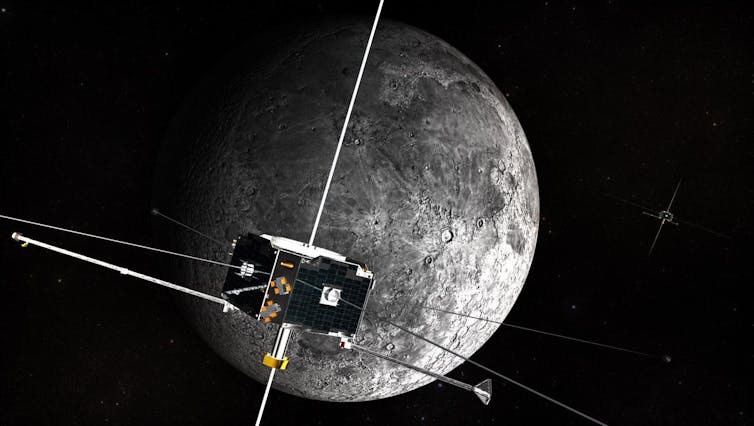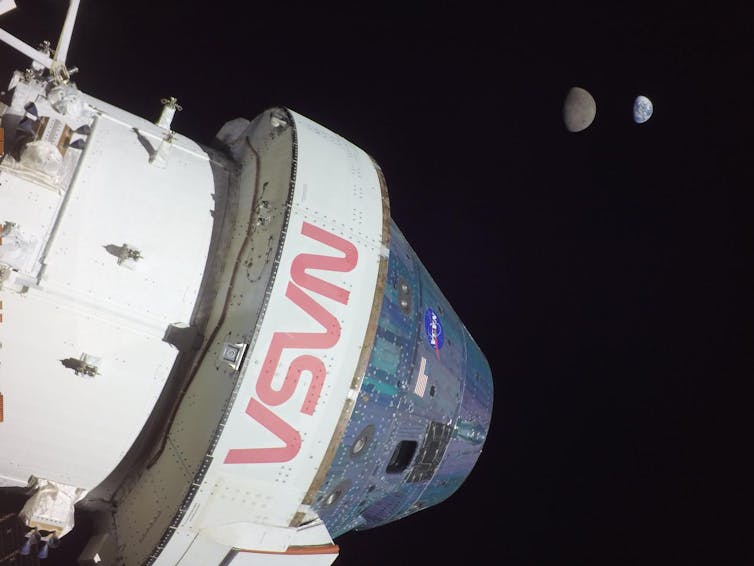Canadian astronaut Jeremy Hansen will be among the next humans to fly to the moon
On April 3, NASA announced the crew for Artemis II, which will see astronauts spending up to three weeks on a flyby trip to the moon in 2024

Estimated reading time: 12 minutes
Gordon Osinski, Western University
This mission will be the first time in more than 50 years that humans will visit the moon — or leave low Earth orbit — since Apollo 17 in 1972. And a Canadian will be onboard this milestone mission: astronaut Jeremy Hansen.
I am a professor, an explorer and a planetary geologist. For the past decade, I have been helping to train astronauts from Canada and the United States in geology, including Hansen. I am also the principal investigator for the Canadian Lunar Rover Mission.
Building on the success of Artemis I
Following the success of Artemis I in late 2022, Artemis II is the next mission in the Artemis program — and the precursor to sending humans back to the surface of the moon.

Scheduled to launch in late 2024, Artemis II will achieve several firsts: it will be the first time humans will fly in NASA’s Orion spacecraft and the first mission to take humans beyond low Earth orbit since Apollo 17 in 1972.
After the launch of Artemis II, the four astronauts will spend a few days in a high Earth orbit, which is over 30,000 kilometres farther out than the orbit of the International Space Station (ISS). There, they will check out all the systems before the Orion spacecraft fires its main engine to take it to the moon for a flyby before returning to Earth.
While not identical in design, Artemis II aims to achieve what Apollo 8 did in 1968, which is to make sure everything works in preparation for Artemis III, which will take humans back to the surface of the moon.
Canadian circling the moon
For many of us, the very fact that the Artemis II crew has been announced is exciting enough as it brings us one step closer to the return of humans to the moon.
But for Canada, this will go down as one of the biggest moments in our space program’s history: onboard this mission will be Canadian astronaut, Jeremy Hansen. This will make Canada only the second country in the world, after the U.S., to send a human to deep space.
Col. Hansen was born in London, Ont., and raised on a farm a few kilometres north. After graduating from high school, he attended the Royal Military College of Canada in Kingston, where he earned a bachelor of science in space science and then a master of science in physics. He then joined the Canadian Armed Forces in 1994 where he became a CF-18 fighter pilot.
In 2009, Hansen was one of two recruits selected by the Canadian Space Agency (CSA). The other was David Saint-Jacques, who spent six months onboard the ISS in 2008-09.
Not only will Hansen be the first ever Canadian to venture into deep space, he will be doing so on his first ever spaceflight!
Canadian technology
These are exciting times for Canada in terms of lunar exploration. As announced in November last year, the Canadian Lunar Rover Mission will be the first ever Canadian-led mission to the surface of another planetary body.
With a launch planned for 2026, our team is making significant progress towards finalizing the design of the rover and its scientific instruments. We are also identifying a shortlist of potential landing sites around the South Pole of the moon.
We won’t have to wait three years, however, for the first Canadian technology to reach the lunar surface.
Just last week, the HAKUTO-R Mission 1 spacecraft successfully went into orbit around the moon after 100 days in space. Onboard the lunar lander scheduled for touchdown in late April are two Canadian payloads funded by the CSA’s Lunar Exploration Accelerator Program: the MoonNet deep learning software from Mission Control Space Services in Ottawa, and an AI-enabled 360-degree camera from Canadensys Aerospace, based in Bolton, Ont.
In case you missed it, the CSA received funding for the next phase of the Lunar Exploration Accelerator Program in the recent federal budget, ensuring that these opportunities for Canadian companies and universities to send technologies to the moon will continue.
In another budget surprise, the government also committed $1.2 billion over 13 years to develop a lunar utility vehicle to assist astronauts on the moon.
Lunar research, terrestrial benefits
As we wait for Artemis II, space agencies are focusing research on how to sustain human presence on the lunar surface. To do so will require innovative solutions to keep astronauts alive and healthy on the lunar surface for up to months at a time.
The surface of the moon is far more extreme than Earth, with no atmosphere and temperatures dropping to a staggering -200 C. However, there are some similarities that remote, isolated communities here on Earth face on a day-to-day basis, particularly in northern Canada.
A major part of keeping astronauts healthy is feeding them. Of course, they could survive on vacuum-sealed meals brought from Earth, but in the long run, this is not sustainable.
Recognizing the similarities of producing food in remote and harsh environments both here on Earth and in space, NASA and the CSA launched the Deep Space Food Challenge to develop new innovative food production technologies.
The hope is that by figuring out how to grow food on the moon, the technologies can also be used here on Earth to address growing food shortages.
Now that the Artemis II crew has been announced, they will be spending every minute of their available time preparing for the mission. For Hansen, this will entail learning the hundreds of different systems on the Orion spacecraft.
Hopefully, it will also include a geology refresher so that he can better understand what he sees as he flies around the moon.![]()
Gordon Osinski, Professor in Earth and Planetary Science, Western University
This article is republished from The Conversation under a Creative Commons license. Read the original article.
What's Your Reaction?
























